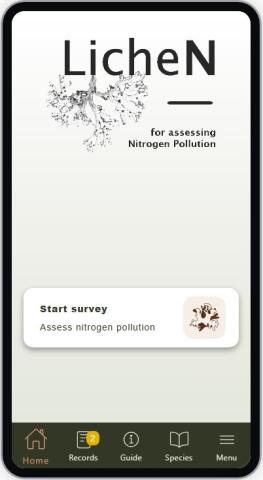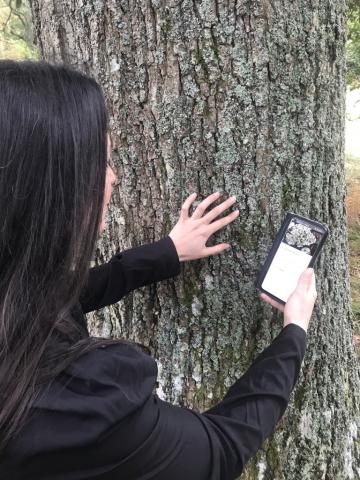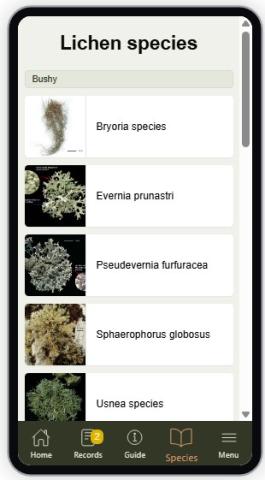LicheN is a new mobile app developed by the UK Centre for Ecology & Hydrology (UKCEH) that uses lichens to measure the effects of atmospheric nitrogen pollution.
It builds on a field guide produced in collaboration with the Natural History Museum, University of Nottingham, SNIFFER, JNCC, Scottish Natural Heritage, Scottish Environment Protection Agency, and the Northern Ireland Environment Agency, and published by the Field Studies Council.
UKCEH research on oak and birch trees across the UK identified a suite of “indicator” lichens - species that are either sensitive or tolerant to nitrogen. By recording the presence or absence of these lichens on tree trunks and branches, users can quickly estimate how polluted their local environment is.
Importantly, the app has been designed for ease of use, focusing on indicator lichens that can be identified without microscopes and are unlikely to be confused with other species.



Key features of the app include:
- Identification guide to nitrogen-sensitive and tolerant lichens.
- Simple survey tool requiring just five trunks and five branches.
- Step-by-step field guide for carrying out surveys.
- Automatic calculation of nitrogen levels using the Nitrogen Air Quality Index (NAQI).
- Public-friendly results, categorised into four zones: Clean, At Risk, Nitrogen Polluted, or Very Nitrogen Polluted.
All records submitted through the app will be stored in the Biological Record Centre’s data warehouse via the iRecord system, where they will be available to surveyors, expert verifiers, and the wider community. Results will also be mapped online, with colour-coded markers showing nitrogen pollution across the UK.
Full details on the app and accompanying field manual can be found on the Air Pollution Information System (APIS).
Further information
The LicheN app was supported by the UK government agencies: JNCC, Environment Agency, Natural England, Natural Resources Wales, NatureScot, Northern Ireland Environment Agency, and the Scottish Environment Protection Agency.